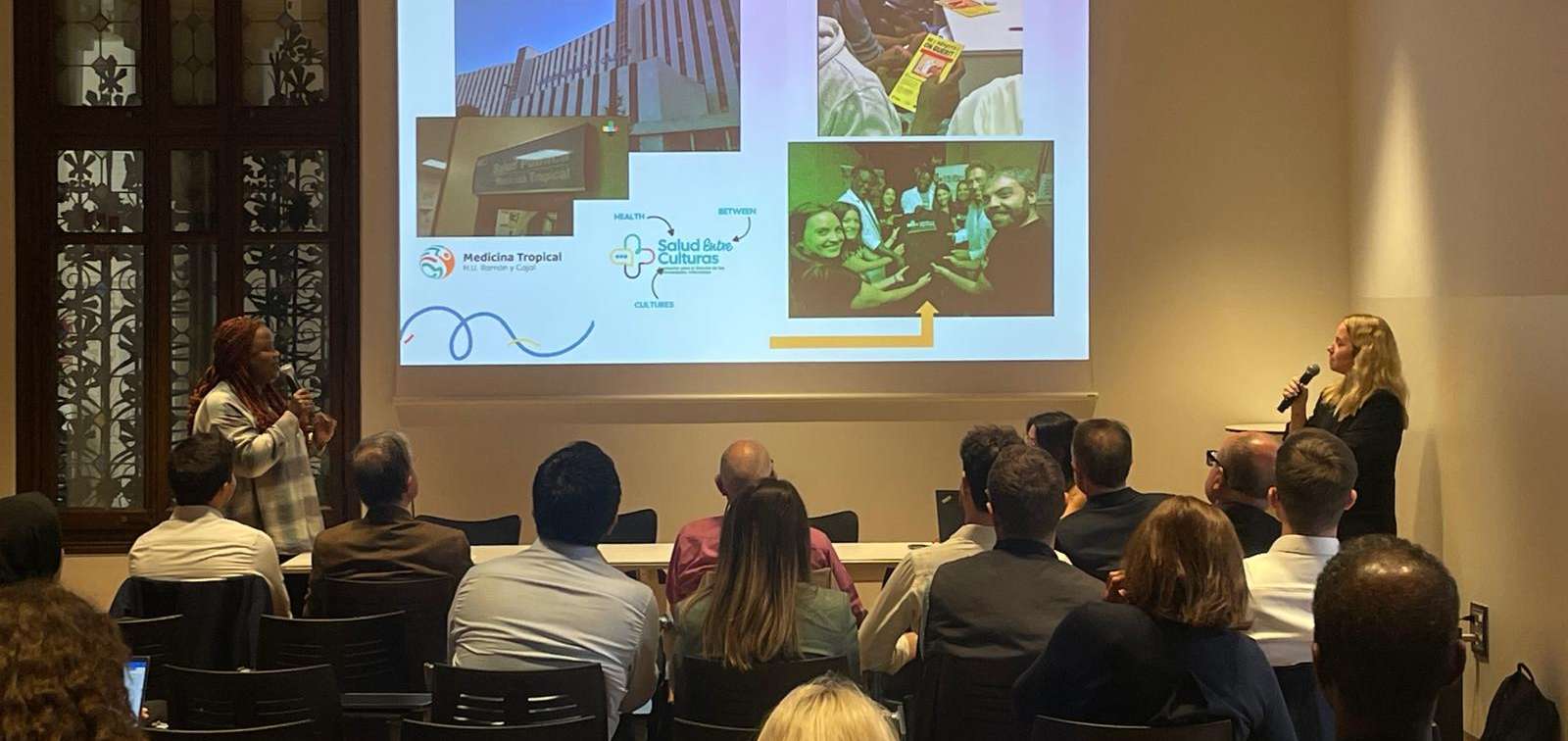VH-COMSAVAC Marks Final Milestone with End-of-Project Meeting at Palau Macaya, Barcelona
The European project, coordinated by ISGlobal, has shown that community-based screening to migrants is not only feasible but also cost-effective.
07.05.2025
The VH-COMSAVAC project, a multi-country initiative focused on improving viral hepatitis prevention and care among migrants and refugees, celebrated its official closing with an end-of-project meeting last April 28, at the historic Palau Macaya in Barcelona, Spain. Coordinated by ISGlobal, the project was launched in response to the stark reality that migrants and refugees in Europe remain disproportionately affected by hepatitis B (HBV) and hepatitis C (HCV)—despite being among the groups least likely to access timely screening, vaccination, and care. Since 2020, HBV and HCV mortality rates in the EU/EEA have shown no decline, and no EU/EEA country has met the WHO 2025 target of diagnosing at least 60% of new hepatitis cases.
Recognising this critical gap, VH-COMSAVAC set out to develop scalable, community-based models of care tailoured to the unique needs of underserved migrant populations. Operating in Italy, Greece, and Spain—the top three EU countries with the highest number of border entries and migrants arriving via the Mediterranean route —the project screened 2,043 migrants and refugees since its launch in 2022. Most participants were young (median age of 38 years), recent arrivals (under 5 years) and primarily from sub-Saharan Africa (27.5%). The project found an HBsAg+ prevalence of 3.53% and anti-HCV+ prevalence of 2.94%. It, however, reached 6% for HBV in Spain and anti-HCV in Greece, underscoring the urgency of targeted screening and care strategies.
A feasible and cost-effective model
One of VH-COMSAVAC’s most significant achievements was demonstrating that community-based screening using simplified diagnostic tools—paired with person-centered referral pathways—is not only feasible but cost-effective.
An economic evaluation confirmed the model reduced waiting times and lowered indirect costs. It also proved highly cost-effective in the Catalonia region of Spain. Nevertheless, challenges remain: while 65.1% of those diagnosed with an active infection (HBsAg+ or detectable HCV RNA) were successfully linked to specialist care, access to HBV vaccination was difficult. In Catalonia, where universal health coverage is guaranteed for all, 95% of people who needed additional testing for serological markers received it. However, only 30% of those eligible for HBV vaccination were actually offered the first dose in the community — though, notably, 90% accepted it when they were. In contrast, in Madrid, less than 3% of those who needed further testing received it, limiting the opportunity for the HBV vaccination to be offered.
Challenges on the path toward viral hepatitis elimination
Reflecting on the project’s legacy, VH-COMSAVAC Coordinator and ISGlobal researcher Camila Picchio stated: “At a time when too many looked away, VH-COMSAVAC stood up—for equity, for migrants, and for action rooted in evidence. And, at it’s core was the community. As the project ends, its message is clear: to reach the WHO viral hepatitis elimination goal, we need more than just recognition. We need sustained funding, strong collaboration, and political will.”
The Barcelona meeting convened leading researchers, health practitioners, community advocates, policy makers, and EU health officials for a full day of data sharing and reflection. Highlights included presentations on project findings by ISGlobal, Università Cattolica del Sacro Cuore (UCSC), Salud entre Culturas (SeC) and roundtable discussions with community leaders from Spain, including Xavier Major i Roca of the Catalan Health Department and Josep Ma Jansà of the Barcelona Public Health Agency.
To mark the occasion, the team unveiled a new policy brief summarising the project’s findings and outlining actionable recommendations to help health systems become more inclusive, equitable, and responsive to the hepatitis needs of migrant communities. The document calls on policymakers to translate evidence into sustainable action—ensuring no one is left behind in the path toward viral hepatitis elimination by 2030.






